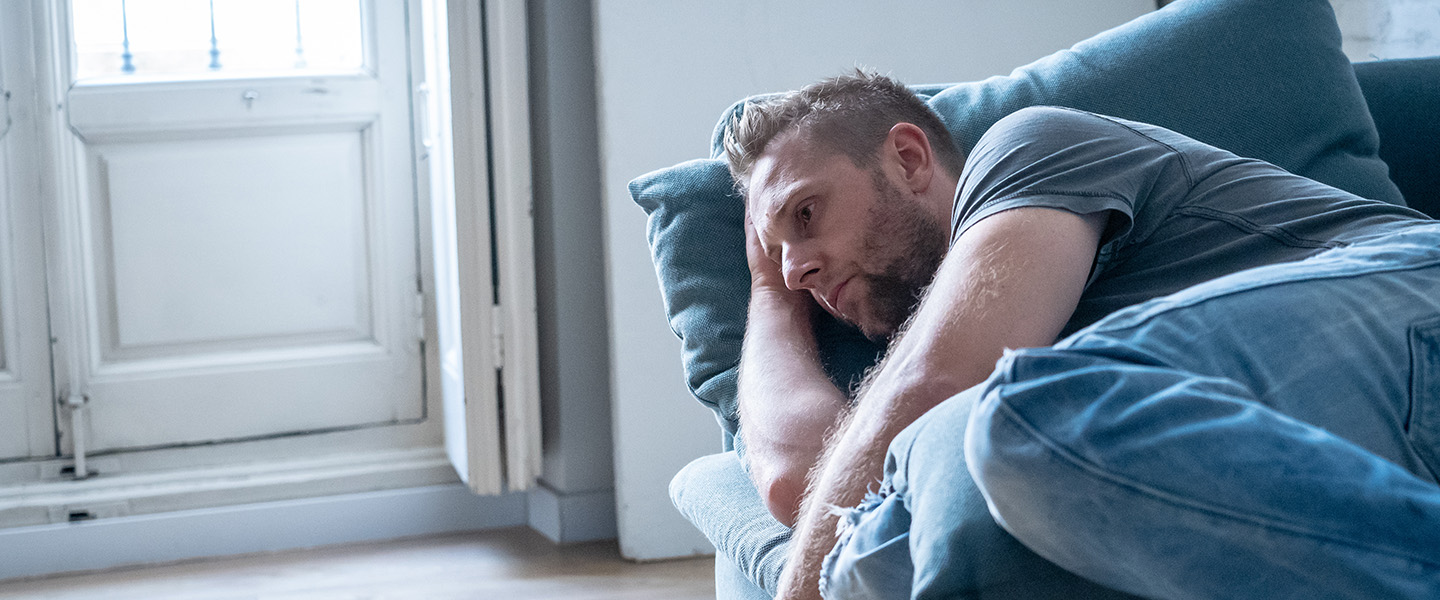Combined Psychosocial Treatment Helped Schizophrenia Patients with Motivational Negative Symptoms
Combined Psychosocial Treatment Helped Schizophrenia Patients with Motivational Negative Symptoms

In recent years, research has begun to suggest something that was once thought to be unlikely: that negative symptoms in schizophrenia may be responsive, to some significant degree, to treatment. A newly published study led by a BBRF grantee adds to the growing evidence base.
Negative symptoms generally refer to the absence or diminution of normal functions like emotional expression and goal-oriented activities in schizophrenia patients. A distinction is made between expressive negative symptoms (reduced display of affect and speech) and motivational negative symptoms (lowered volition, drive, capacity for pleasure). Together, negative symptoms have great impact on how well patients function in the community and consistently predict future social and work outcomes.
Negative symptoms are much harder to treat than schizophrenia’s so-called positive symptoms, which include hallucinations, delusions, and odd or intrusive thoughts. Positive symptoms are often well managed in patients with antipsychotic medicines. These medicines have little impact on any of the negative symptoms of the illness.
A research team led by 2014 BBRF Young Investigator L. Felice Reddy, Ph.D., currently of the University of North Carolina-Chapel Hill, conducted a randomized, controlled trial in Southern California testing the effectiveness of a novel combined psychosocial treatment on motivational negative symptoms in schizophrenia patients. Michael F. Green, Ph.D., the team’s senior member, at UCLA and the VA Hospital in Los Angeles, is a 2016 winner of the BBRF Lieber Prize for Outstanding Achievement in Schizophrenia Research, and a leading authority on evaluating social and cognitive retraining and novel interventions to improve cognitive impairments in schizophrenia and psychotic disorders.
The team hoped to extend benefits already noted when some schizophrenia patients receive cognitive behavioral therapy (CBT) to address their negative symptoms. As the researchers point out, CBT is a promising candidate therapy, being structured and action-oriented, and with the goal of helping patients change maladaptive thoughts or behaviors that interfere with daily functioning. This approach has been used to target, for example, defeatist beliefs that many patients hold (“why bother trying X [for various possible reasons]”); and avoidant behavior (e.g., social withdrawal). The late Aaron Beck, M.D., who developed CBT, used his 2016 BBRF Distinguished Investigator award to pioneer CBT in schizophrenia patients.
CBT is time- and resource-intensive, and its utility also may be limited by the fact that people with schizophrenia often have low motivation to begin and stay with the treatments. Recognition of this problem has led to the idea of combining “motivational interviewing” with CBT—an approach that has yielded positive results in several disorders including substance-use disorders, depression, and anxiety. Motivational interviewing, woven into CBT sessions in this trial, is designed to augment a patient’s motivation and to encourage consideration of the potential benefits of therapy as against the “cost” in time or effort that the patient must expend.
Drs. Reddy, Green and colleagues recruited 79 individuals with schizophrenia whose negative symptoms were judged to be moderate to severe. 41 participants were assigned to receive combined therapy (motivational interviewing + CBT, or “MI-CBT”); 38 were assigned to a control group and received a mindfulness training intervention (but neither CBT nor motivational interviewing). In the hope of making the psychosocial intervention more accessible and lower-cost, participants in each cohort received their intervention in groups of 5 to 8. Group therapy, via group dynamics, also sometimes enhances therapeutic effects.
Both cohorts received 12 one-hour group treatment sessions, which were similarly structured even though the content of the therapy was different between MI-CBT and controls. Participants were mostly 40-60 years old; over half were Black; 95% were male. On average they attended 9 or 10 therapy sessions and completed the trial, which involved assessments before the treatments began, following the 12th session, and again 12 weeks following the end of active therapy.
“We found a robust treatment effect for MI-CBT that was partly maintained at [24-week] follow-up for motivational negative symptoms,” the team reported in The American Journal of Psychiatry. “Many participants reported meaningful and positive behavioral changes in their exit interviews,” the team added, noting “it appears that meaningful changes in daily functioning were occurring for many.”
Assessments of how the intervention impacted community functioning were positive, but in this sample were not statistically significant. A means of trying to measure the neurophysiological impact of the interventions on motivation—tracking pupil size, which changes when someone exerts effort—suggested to the team that those who received the combined therapy “more effectively modulated their effort exertion” than those in the control group. “Our results are encouraging for psycho-social interventions aiming to improve quality of life for people with schizophrenia,” the team said.
Regarding the impact of MI-CBT on how well patients functioned in the community, the team speculated that the therapy may have been most effective in supporting participants in the early stages of making improvements—by helping them to modify their attitudes about the worthiness of commitment to therapy; but may have been less effective in later stages in which attitudinal changes are realized in terms of sustained lifestyle changes such as becoming more socially connected or holding a job.
For this reason, they said future studies might provide the combined therapy for lengthier periods, and might attempt to provide booster sessions after therapy ends. The team is now completing a 2-year trial with MI-CBT and multiple booster sessions that targets recently-housed previously homeless veterans, some but not all of whom have mental illness. Motivation and community integration are the objects in this trial, rather than negative symptoms, per se, Dr. Reddy says.




